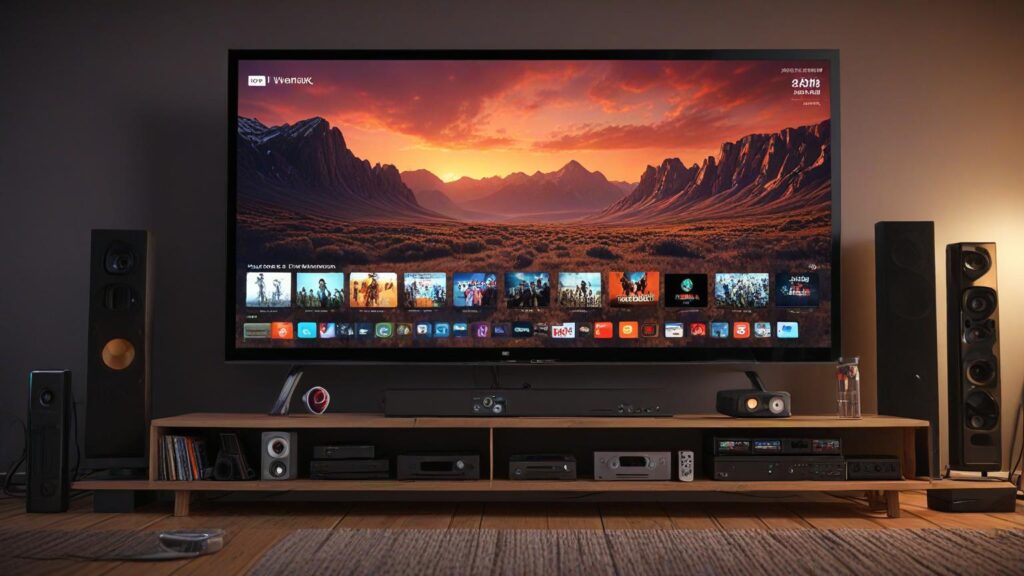
Discover the Best Book Recommendations Today
Finding great books can seem hard, but with the right help, you can find your next favorite. A good website for book recommendations can guide
The Official Website of E.B. Brown

Streaming services have fundamentally redefined the movie-watching experience, shifting how audiences consume films and transforming the very fabric of the entertainment industry. Platforms like Netflix, Amazon Prime Video, Hulu, and Disney+ have brought movies to viewers’ fingertips, revolutionizing not only how we watch but also when, where, and what we choose to watch. This digital transformation is reshaping the traditional cinematic experience, offering convenience, accessibility, and a level of personalization that traditional theaters and cable TV could never match.
One of the most profound changes that streaming services have introduced is the on-demand nature of content. Unlike the rigid schedules of television programming or the limited window of theatrical releases, streaming platforms allow viewers to watch movies whenever they want. With the click of a button, audiences can access an expansive library of films, from timeless classics to the latest releases, all available for immediate viewing. This shift has eradicated the notion of "appointment viewing," giving viewers the freedom to watch movies on their own terms. No longer do we need to plan around showtimes or wait weeks for a film to appear on television—streaming services make movies available instantly, on-demand, whenever the viewer is ready.
This accessibility extends far beyond time flexibility. Streaming services have redefined the space in which movies are consumed. The traditional theater experience—an immersive, collective activity where viewers sit in darkened rooms watching massive screens—has been contrasted by the rise of home viewing. With streaming, the movie-watching experience is no longer confined to a theater or living room. Movies can now be watched on a variety of devices, including smartphones, tablets, laptops, and even smart TVs, allowing viewers to take their film experiences on the go. Whether it’s watching a film on a plane, in bed, or during a commute, streaming has made the movie-watching experience more portable and flexible than ever before.
The ability to watch movies anywhere has also had a significant impact on audience behavior. Streaming services have made it easier for viewers to binge-watch movies or entire franchises in one sitting. While theatrical releases are typically confined to one-time viewing in a theater, streaming platforms encourage marathon viewing, often presenting entire film series or collections as a cohesive, continuous experience. This binge-watching culture has transformed the way people engage with films, allowing them to dive deeper into story arcs, characters, and world-building across multiple films in a way that was once reserved for television series. Franchises like The Lord of the Rings, The Godfather, and the Marvel Cinematic Universe have found new life on streaming platforms, where fans can easily consume entire sagas in one go.
Another aspect of streaming’s influence on the movie-watching experience is the shift in content discovery. In traditional cinema or TV settings, viewers often rely on the guidance of theaters or cable networks to determine what movies to watch. With streaming services, however, audiences have the freedom to explore and discover new films based on their own tastes and preferences. Recommendation algorithms have become a central feature of these platforms, offering personalized suggestions based on viewing history, ratings, and even genre preferences. This algorithm-driven approach makes it easier for viewers to find films outside the mainstream, discovering hidden gems, international films, or lesser-known indie movies that may not have been accessible in a traditional theater setting.
Moreover, streaming platforms have drastically changed the economic model of film distribution. In the past, movies were typically released through a multi-step process: theater runs, DVD/Blu-ray releases, cable broadcasts, and eventually streaming. Now, streaming services have expedited that process, often releasing films directly on their platforms simultaneously or soon after their theatrical runs. This has become especially evident during the COVID-19 pandemic, where studios shifted high-profile releases directly to streaming, bypassing theaters altogether in some cases. Titles like Mulan and Wonder Woman 1984 were released on streaming platforms to reach global audiences without the logistical and health concerns surrounding theatrical releases. As a result, streaming services have become a crucial distribution outlet for both blockbuster films and smaller indie productions, providing filmmakers with an alternative to traditional studio distribution.
The streaming model has also introduced a new sense of immediacy and convenience. Viewers can watch newly released films on the same day they premiere, often in the comfort of their homes. This direct-to-streaming approach eliminates the need to wait for a movie to become available on DVD, Blu-ray, or on-demand rental services. Major streaming services like Netflix and Amazon Prime Video have implemented models where viewers can enjoy access to the latest films immediately upon release, making it easier to avoid spoilers and participate in global conversations about the film.
One of the more recent changes in how streaming services are shaping the movie-watching experience is the shift toward creating original content. Platforms like Netflix, Amazon, and Apple TV+ are investing heavily in producing their own exclusive films, often with star-studded casts and high production values. Films like The Irishman (Netflix), The Tomorrow War (Amazon), and Greyhound (Apple TV+) have demonstrated that streaming services are not just passive distributors of content but active creators of cinematic experiences. These original films often receive global attention and can sometimes even rival theatrical releases in terms of their cultural impact. Streaming services now have the power to not only curate films from other studios but to shape the future of cinema itself.
While streaming has undeniably brought convenience, variety, and accessibility to movie-watching, it has also challenged the theatrical experience. Movie theaters, once the exclusive venue for film releases, now find themselves in competition with streaming platforms, which have captured the attention of viewers who prefer the flexibility of home viewing. Theaters rely on exclusive premieres to attract viewers, but with streaming services offering early access to films, this exclusivity is increasingly under threat. Some major studios, like Disney, have embraced simultaneous streaming releases for big-ticket films like Black Widow and Jungle Cruise, while others are exploring hybrid models that allow for both theater and digital access.
Despite this, there is still a significant portion of the audience who values the social and immersive experience of going to the movies. Theaters offer something streaming cannot replicate—the communal atmosphere, the massive screen, the surround sound, and the escape into a world of cinematic grandeur. As a result, the theater-going experience continues to have a place, even as streaming services redefine the norms of film consumption.
In conclusion, streaming services have fundamentally redefined the movie-watching experience by offering unprecedented flexibility, accessibility, and personalization. They have changed not only the way audiences access films but also how they engage with them, allowing for a deeper, more immediate connection to content. By making films available on-demand, facilitating binge-watching, and promoting diverse content discovery, streaming platforms have transformed the way we consume cinema. While theaters continue to offer a unique experience, streaming services have emerged as a dominant force, reshaping the entertainment landscape and offering new possibilities for filmmakers and audiences alike.

Finding great books can seem hard, but with the right help, you can find your next favorite. A good website for book recommendations can guide

Connecting with fellow book lovers can open up new worlds and build lasting friendships. A local Reading Community offers a sense of belonging and enriches

The rise of digital publishing has made E-book Platform solutions more popular. With many online e-book platforms out there, picking the right one is key.